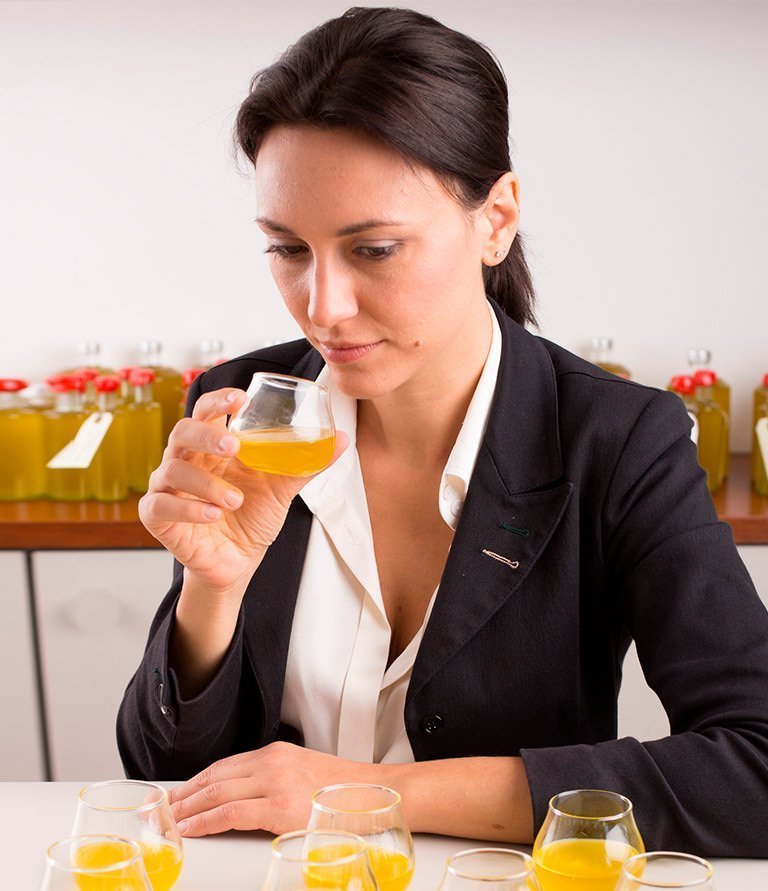It is an evaluation that we unconsciously do every day when taking food or a drink to the mouth
Our taste buds, found from the tip of our tongue to its very back, perceive four sensory attributes: sweet, salty, acid and bitter. With olive oil, we can only perceive bitterness: we can’t taste sweetness or saltiness, because there are neither sugars nor salts in an olive oil (the sweet sensation detected in some oils is in fact entirely due to the absence of bitterness), nor can we make out acidity, as our taste buds are not “calibrated” to recognise the presence of the free acids present in all olive oils. Furthermore, is possible to perceive, especially in the throat, a tingling sensation, a characteristic pungent note present in fresh oil.
This is why organoleptic evaluation of olive oils is performed mainly through the sense of smell that evaluates smell, in the nose, and aroma, in the pharynx.
Taste, smell and the tingling effect are a result of enzymatic processes triggered during malaxation. The bitter note and the tactile pungent sensation, result from the chemical characteristics and the concentration of the phenolic derivatives (polyphenols) present in the oil. Odour and aroma are the result of a chain of reactions that produce airborne organic compounds.


To obtain a high-quality oil every stage of the olive-to-oil chain needs to be carefully monitored. Bruising during harvest, long storage before crushing, inadequate separation and filtration techniques can adversely affect quality and lead to organoleptic defects leading the oil to be fusty, winey, rancid, musty or even have muddy deposits.
This may spoil an oil, even making it unfit for human consumption.
According to EU Regulation 2568/91 olive oil product classification depends on the chemical, physical and organoleptic characteristics identified through validated analytical methods.
Objective evaluation of organoleptic characteristics of an extra virgin olive oil is carried out by a selected panel of trained testers applying the “Panel Test” method devised by the International Olive Oil Council (I.O.O.C.).
Evaluations are based on a list of coded positive and negative attributes descriptors as well as the intensity of each.
To classify an oil as extra virgin, the oil must be entirely free of negative attributes and possess all 3 positive attributes: fruitiness, bitterness and pungency
To evaluate and test the organoleptic characteristics of oils with protected designation of origin the I.O.O.C. has devised a method that involves a panel of tasters.
The members are appointed locally and trained to identify the typical organoleptic profile of PDO and PGI oils produced in that specific area. Their role is to verify that an oil seeking certification possesses the sensory characteristics set out in the relevant Product Specifications.
© 2017 Primoli – P.Iva 01165110998 – Molo Ponte Morosini, 49/7 – 16126 Genova GE – +39 010 2530024